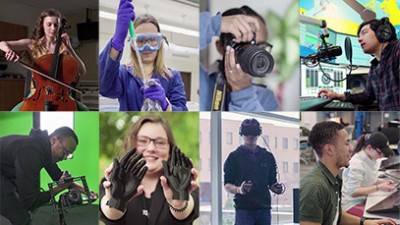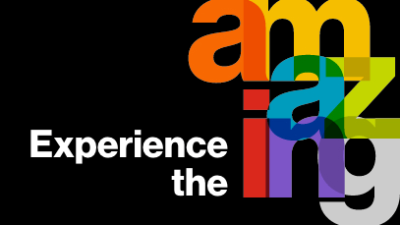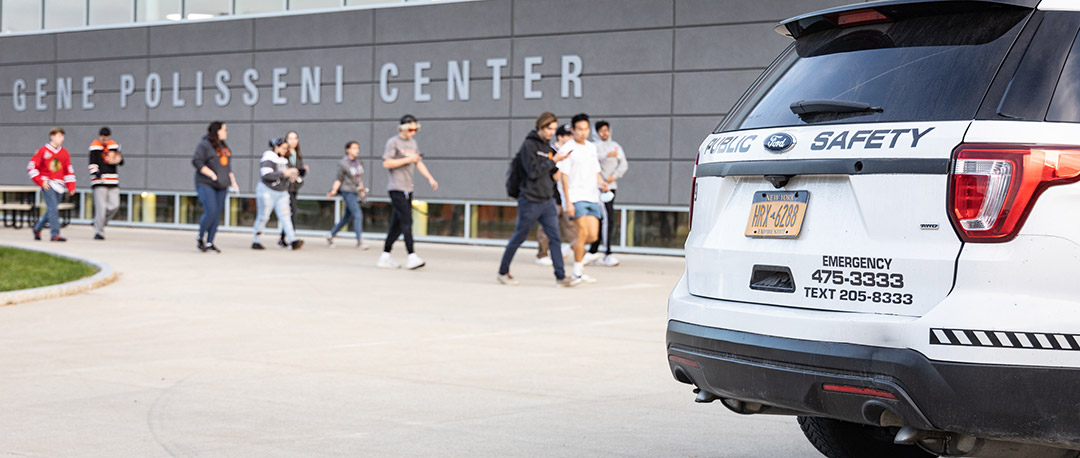RIT uses new technology upgrades and increased training to keep campus safe
RIT Public Safety
RIT’s 43-member Public Safety department handles thousands of calls and safety checks each year, and has recently invested in more training and technology to help keep those on campus safe.
When school is in session, Rochester Institute of Technology can have more than 20,000 people on its main campus, which covers 1,200 acres, half of which is wooded or undeveloped.
Thanks to new technologies and training, the 43-member Public Safety department is now able to better manage the expansive campus and respond to the thousands of calls or safety checks they handle each year.
Some of the new technology includes monitors and drones, and its communications are now better linked with neighboring agencies.
“Technology helps us with a lot of things,” said Public Safety Executive Director Gary Moxley. “If we didn’t have the use of new technology, we would have to use more of our physical resources, and it could take longer to take action.”
Public Safety has a new communications center, more than triple in size from its previous one, which is staffed 24/7.
Several locations on campus and on other RIT properties, such as the RIT Inn and Conference Center, Tait Preserve, and RIT’s Center for Urban Entrepreneurship in downtown Rochester, are also monitored from the communications center. That’s especially important during severe weather incidents or other emergencies. For example, if a fire is reported, dispatchers can look for evidence of smoke or flames and relay that information to responding firefighters.
Every public safety officer at RIT has undergone CPR training and weeklong crisis training offered through Monroe County.
RIT has made an investment to update the current access control infrastructure from magnetic swipe card readers to encrypted smart card readers and is scheduled to be completed by next spring. Public Safety has also integrated access control, surveillance cameras, and alarm systems into one system to provide enhanced monitoring and quicker response.
In addition, RIT’s Public Safety radio channels can now easily connect with area police agencies, including the Monroe County Sheriff’s Office, which patrols the area bordering RIT. This will enable quicker responses if mutual aid is needed. Calls to 911 are now shared with the department if they originate from campus or an RIT phone.
This year, the department purchased three 18-inch drones – two for use, one for training – and four officers received FAA certification to use them when needed.
The drones, which can free up dozens of public safety officers to respond to other calls, have already been used to help find missing children during the Imagine RIT: Creativity and Innovation Festival and monitor capacity in parking lots during events, including commencement and high school graduation ceremonies held on campus.
RIT does not allow students to use drones, and when Public Safety uses theirs, they must keep them under 200 feet, or 400 feet with FAA permission due to the proximity to the airport.
RIT also has agreed to keep their drones no lower than the top of buildings they are near, so there is no worry that drones will be flying by windows to respect occupant privacy.
“Most of the time, we’ve used them for events and to monitor traffic flow and parking lot space. Before drones, we couldn’t see any of that,” Moxley said.
Moxley encourages anyone on campus needing assistance to contact Public Safety though RIT’s TigerSafe app, call or text (585) 475-3333 or text (585) 205-8333 to report an emergency or use one of nearly 100 BlueLight emergency phones throughout campus.
He says his office is receiving more requests for mental health issues, which he believes is a testament to increased awareness of when to seek help. “If you don’t know who to call, give us a call,” he said. “If we can’t help you, we can turn you to the people who can help, even after hours.”
Moxley’s office is contacted daily by companies wanting to sell RIT safety products. Most are not needed, not practical, or not proven. Still, he says he can see the day when AI technology could be used in some way.
“It’s inevitable,” he said. “We certainly investigate any new technology to help keep RIT safe, especially for our students, faculty, staff, and visitors.”












